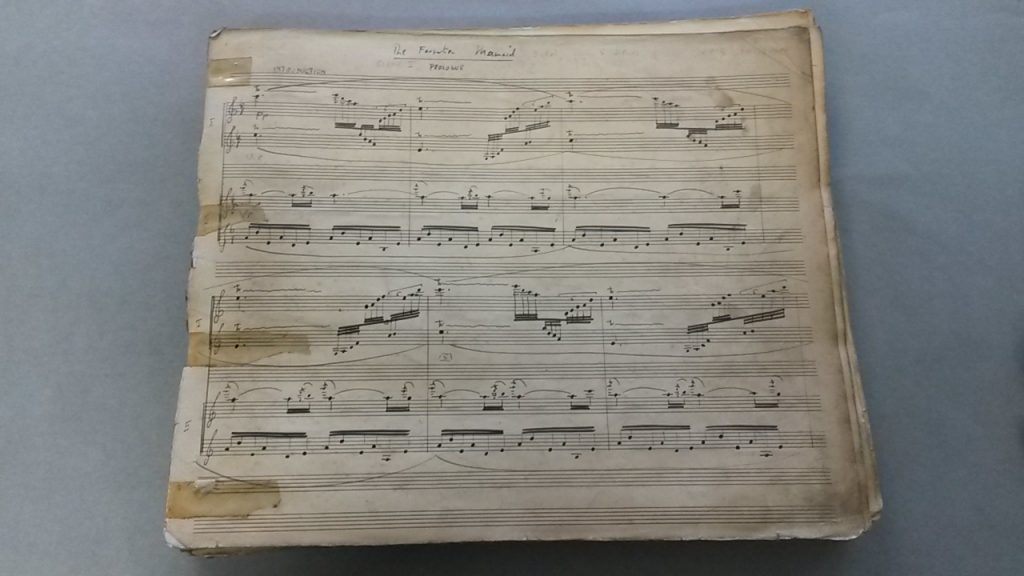This week’s blog has been written by Lisa Behrens, a book and paper conservation student from Stuttgart in Germany, who spent four weeks at CRC’s conservation studio earlier this summer. In this post, Lisa describes a treatment she carried out on a bound volume in the Margaret Morris collection from the Fergusson Gallery in Perth. This collection is being catalogued and conserved at the CRC as a part of a collaborative Wellcome Trust-funded project entitled ‘Body Language’
If you don’t know the first thing about paper conservation, let me help you out: Do not, under any circumstances, use sticky tape. There you go, you now know the first thing.
I understand it’s tempting. When you first put it on, it looks neat. It mends that tear, it is easy to use and readily available. The problems start when it begins to age. Even if stored in optimal conditions, certain chemical reactions will inevitably take place. These will lead to discolouration of the adhesive, making the tape brittle and, worst of all, damaging and discolouring the object itself. Adhesive can also sink into the paper matrix and become so hardened that it’s almost impossible to remove.
During my three years of working and studying in this field I have come across a lot of adhesive tape, mostly used for tear repairs by well-meaning individuals over the last few decades. For example, this volume of sheet music from the Margaret Morris Collection, namely a ballet called The Forsaken Mermaid, had been repaired at least twice before, which is apparent from the use of different types of adhesive tape and kinds of thread for resewing.

The Forsaken Mermaid, before treatment
